
The second largest of the Scottish islands, the Isle of Skye was bestowed with the Old Norse name sky-a – ‘cloud island’ – by the Vikings, an allusion to the mysterious mists that invariably envelop the Cuillin Hills. Stretching for 50 miles to the west of the Scottish mainland, Skye is renowned for its dramatic landscapes, featuring shimmering lochs, narrow peninsulas, spectacular mountains, and untamed moorland.
Unsurprisingly, it’s the scenery that draws visitors to Skye in their hordes – there’s something quite magical in an ethereal sense that connects the island with its Scandinavian neighbours as much as with the traditions and history of the mainland. It’s impossible not to be overawed but, the landscape aside, there’s more to Skye than hiking through the mountainous interior or strolling around the fringe of a loch as you unwind from the stresses of modern life.
The hidden gems are plentiful – stay for less than a week and you’ll barely have time to catch your breath – so arrive on the island with a patient, open mind and let a journey of discovery show you what many visitors fail to experience.
Skye’s history is rich in variety, with a booming island economy emerging in recent centuries that focused on crofting, fishing, and weaving. The award-winning Skye Museum of Island Life takes visitors on a tour through time, to walk through seven traditional thatched cottages, which are so accurately reconstructed that it’s impossible not feel that you’ve stepped into a 19th century Hebridean settlement, an important glimpse into the history that shaped the island’s way of life.
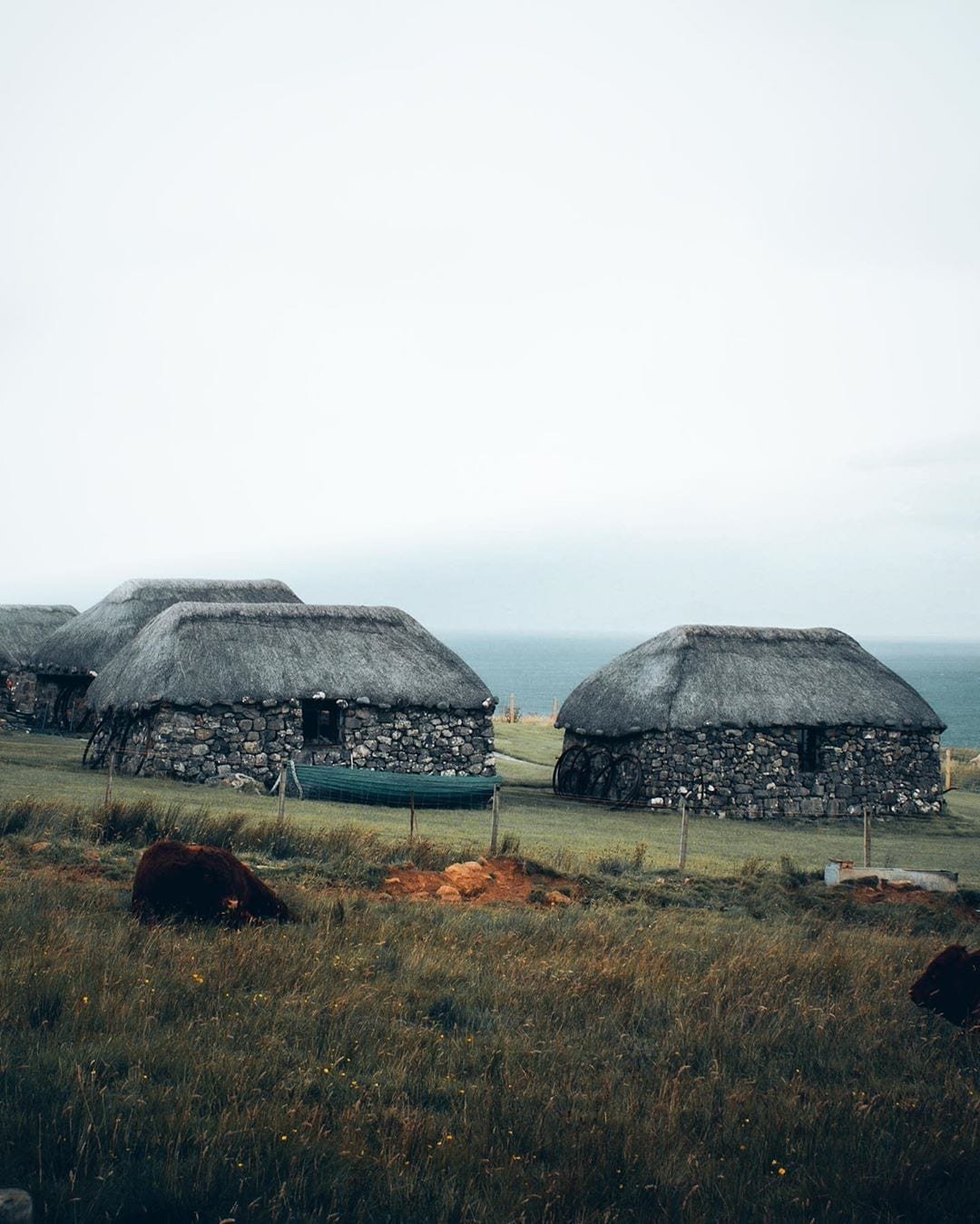
Photo by James Martin
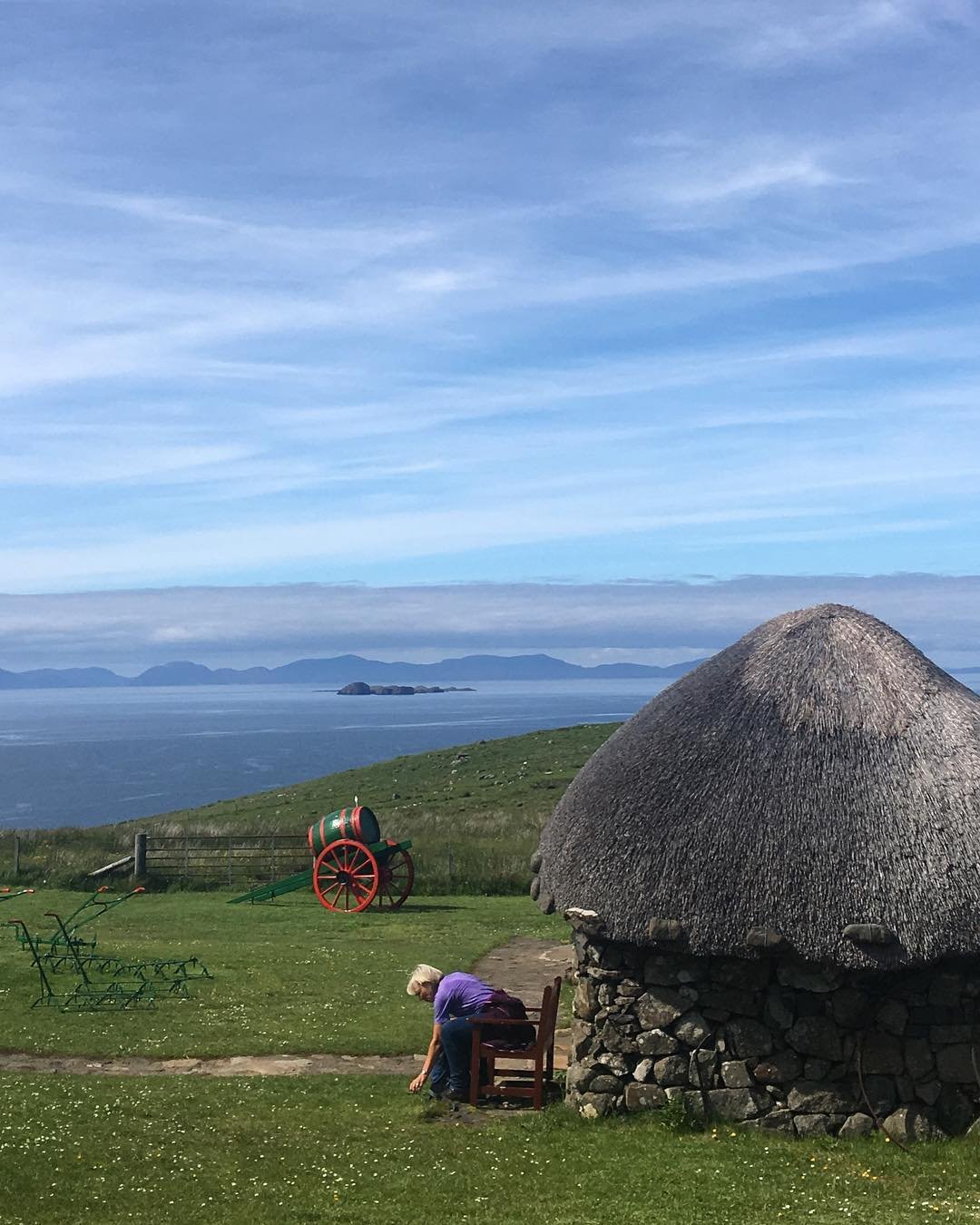
Photo by Sebastian Martinez
Only a mile southwest of the town of Harlosh, the headland of Harlosh Point sits at the end of a peninsula, separated by a narrow channel from Harlosh Island. A walk to the headland sees the Cuillin rising dominantly to the south, MacLeod’s Tables and the Maidens to the north, and the Isle of Rhum to the west. Seals gather on Harlosh Island when the tide is out, while the area is also rich with caves, ruins, and plenty of sheep.
On the southern fringe of the island, Sleat Point is the culmination of a rewarding hike, offering the opportunity to witness marine life, such as dolphins, gannets, and shags, to explore impressive rock formations, or to take in the extensive views of Rum and Eigg from the modern lighthouse. The secluded sandy beach at Camas Daraich, renowned as one of the most peaceful and beautiful spots on the island, is well-worth a diversion en-route.


For centuries, crofting was a way of life on Skye and, at the Colbost Croft Museum, you can experience 19th century living in a traditional croft house. With only a handful of rooms, dry stone walls, and a bare earth floor, it’s fascinating to realise how basic living was, particularly in the harsh Skye winters, though the peat-smoked air fuelled by the open hearth would have been forgiven for providing an entire family with the warmth needed for survival. Outside, the illicit still is evidence of Scotland’s long whisky tradition that goes back many years before the founding of the distilleries.
Run by a local family, The Oyster Shed harvests fresh oysters each day on their farm in Loch Harport, which are shucked, cooked, and sold from the farm shop that overlooks the Cuillins. Other high- quality local produce from the Hebrides is also available, including lobster, mussels, crab, venison, and cheese, making The Oyster Shed the ideal way to savour nature’s finest harvest while staying in Skye.

Photo by whiskey_traveling

Photo by whiskey_traveling
Set in a restored Highland croft – a rarity in itself, as few similar examples survive – the museum is dedicated to Angus MacAskill, reputedly the tallest ‘true giant’ who reached a staggering 7’9”. While he may not have come from Skye at all, the sense of enormity is perplexing, from Angus’ life-size statue to the huge chair, socks, and jumper. Even a replica of his oversized coffin awaits you, guaranteeing that you’ll leave feeling very small indeed.

Skyeskins is the country’s only sheepskin tannery, and a highly rated visitor attraction! Visitors are warmly welcomed with a free guided tour to find out more about the craft of leather making, with live exhibitions demonstrating an art that has its roots in centuries of Skye history. An extensive collection of products makes for an enjoyable browsing experience, including sheepskins, throws, and mosaics for home furnishing, and a wonderful array of knitwear, hats, gloves, and scarves for the wardrobe.

Photo by @skyeskynsltd
The stronghold of the Macneacail clan for over eight centuries, Scorrybreac is a mesmerising spit of land between Skye and Raasay from where rewarding hikes up Ben Chracraig reveal panoramic views over Portree Bay. Shorter walks, including the 3km Scorrybreac circuit which offers an impressive sight of the Isle of Raasay, are also plentiful, perhaps best completed on a late summer evening after dinner.

Photo by Matt Deamer
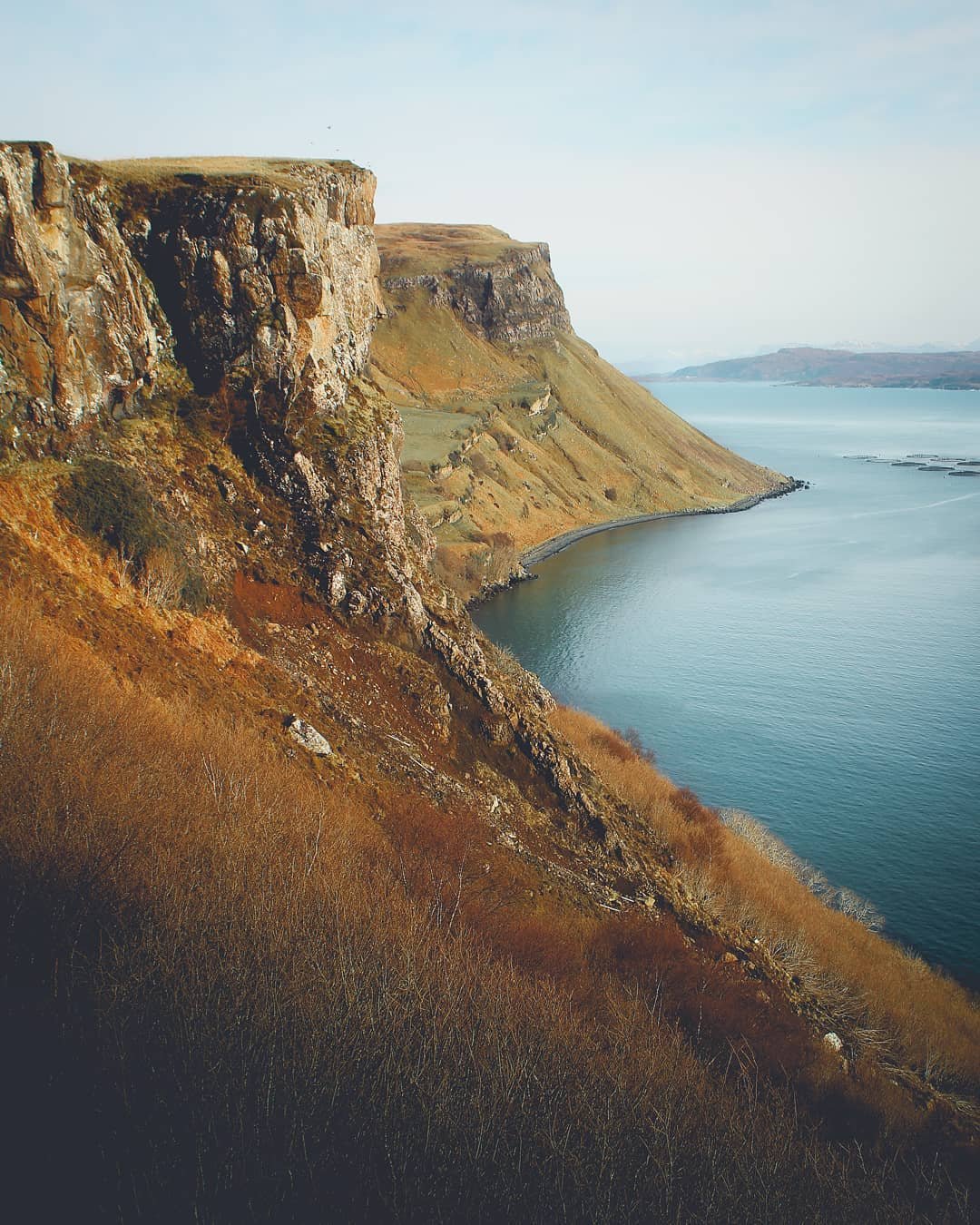
Photo by Matt Deamer
Skye is a fantastic destination for wildlife lovers but, at the Skye Bird of Prey Experience in Dunvegan, you can get up close to two Harris Hawks for a fantastic one-hour educational experience. Set amid spectacular countryside with fine views, visitors can learn to handle the free-flying hawks and practise calling them to land, offering a valuable insight into the behaviour of these magnificent birds.


Not for the faint-hearted, the Cuillin represents the ultimate climbing challenge. Infamous as the UK’s most challenging mountain range, the ridge of the Cuillin spans 11km, soaring to 3,000 feet in places, and features eleven munros and sixteen other summits. Various routes are accessible, each offering stunning views that are near impossible to capture elsewhere. However, only experienced hill walkers and climbers who are fully equipped should embark upon the challenge.

Photo by @theworldwithsarah

Photo by @theworldwithsarah
Sligachan, nestled at the foot of the Black Cuillin, boasts some of the most recognisable picture postcard scenes on the island, particularly of the enchanting stone bridge that spans the River Sligachan, with the Sgurr-nan-Gillean rising over. There are unending hiking routes here, each offering impressive views; many avid climbers choose Sligachan as the starting point for their ascent of the Cuillins, but for less ambitious walkers, the lower reaches of the river, with its mythical beautifying properties, is just as rewarding.
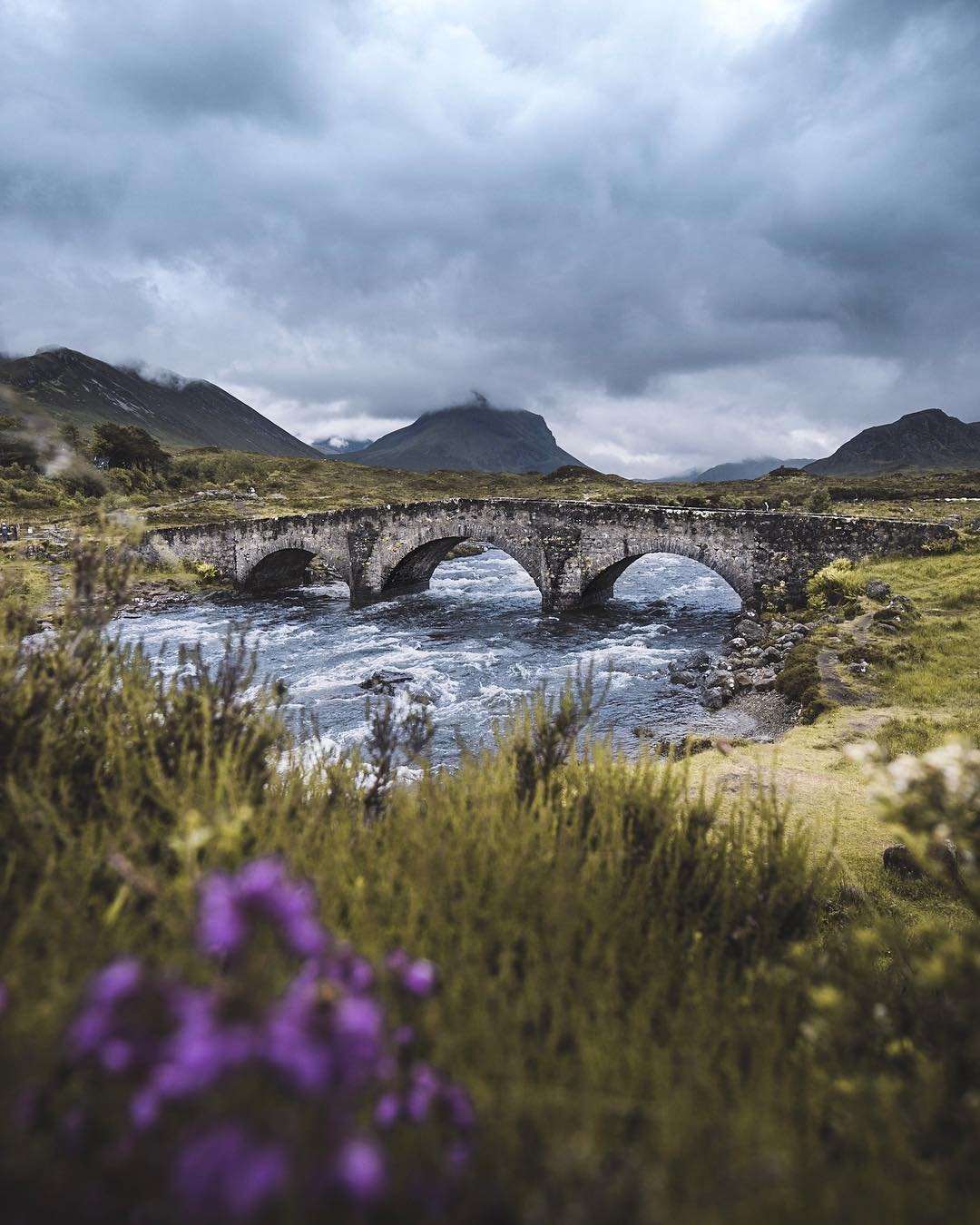
Photo by Hamish Morrison

Photo by Hamish Morrison
St Kilda, an isolated archipelago situated approximately 40 miles from the Outer Hebrides in the North Atlantic Ocean, is the UK’s only designated UNESCO Dual World Heritage Site and National Nature Reserve. Home to the largest seabird colony in north-west Europe, St Kilda’s residents include Atlantic puffin, gannets, and northern fulmar. Go To St Kilda a variety of excursions from Waternish, from one day returns to five-day photography trips, enabling visitors to witness sea birds naturally in one of most inspiring island locations in the world.
The Fairy Pools, situated at the foot of the Black Cuillins, are crystal clear pools on the River Brittle that are famous across the world, not only for their mesmerising beauty, but for wild swimming for those courageous enough to brave the icy temperatures! A walk across the windswept moors leads to the river and a series of pools, the deepest of which boasts an impressive submerged arch.

Photo by Hamish Morrison

Photo by Hamish Morrison
A short ferry journey from Skye is all that separates the island from the Isle of Raasay, one of the most diverse locations in Europe. Deserted beaches, dense forests, and undulating hills dominate the landscape, with exceptional mountain views of the Cuillins, while the manmade single-track road known as Calum’s Road proposes an unlikely attraction.

Photo by Caroline McQuistin

Photo by @raasaydistillery
Located in the island’s capital, Portree, Edinbane Pottery is a wonderful browsing opportunity among the exquisite handmade ceramics that are created and fired on-site. Richly influenced by the heritage and culture of the Hebrides, the salt-glazed ceramics mirror the natural colours of the ocean, the untamed landscapes, and the native wildlife. With every piece unique, you’ll be spoilt for choice when hunting for that memento to take home!
It’s almost hard to believe that 165 million years ago a family of Ornithopods – upright-walking herbivorous dinosaurs – crossed the beach at Staffin, leaving a set of dinoprints in their wake. The evidence, set in a sandstone bed, are revealed at low tide, offering a remarkable chance to see and touch a part of history that is so far removed from the modern day that it stretches the mind that they still exist. Close by, the Staffin Dinosaur Museum is the only attraction of its kind on the island.
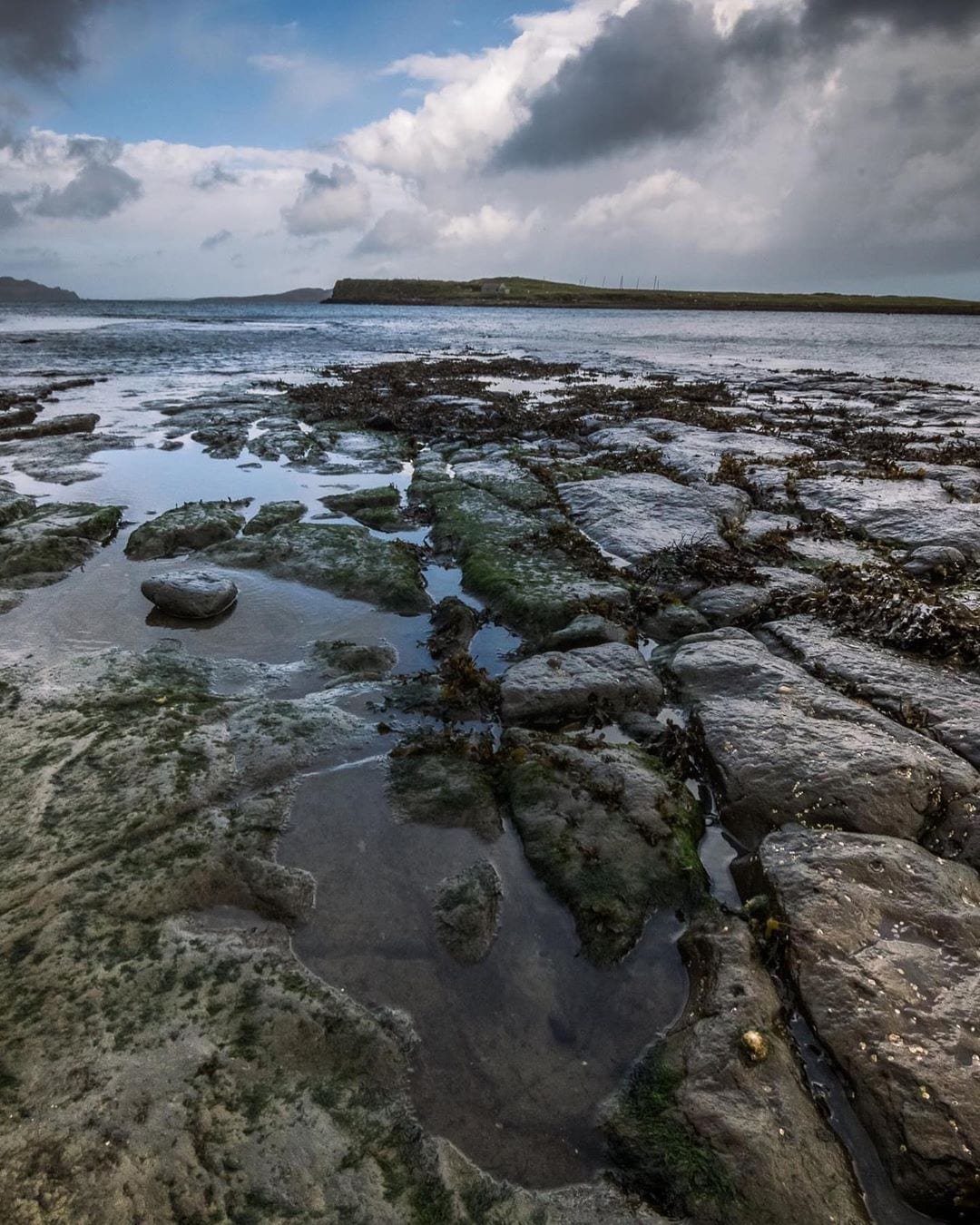
Photo by @ally_deans75
The most famous walk on Skye – don’t expect to be alone in high season – this rewarding walk through Trottenish in the north of the island takes you close up to the ‘Old Man’, the immense pinnacle of rock that can be seen from many miles around. Formed by a huge landslide in the depths of time, the ‘Old Man’ is only one part of a fascinating series of rock formations, while the views over the Sound of Raasay are exceptional.

Photo by Connor Mollison

Photo by Connor Mollison
An unforgettable underwater adventure is assured when you board the glass bottomed Seaprobe Atlantis which sails from Kyleakin Harbour daily between Easter and October. Not only can you observe Syke’s diverse wildlife – from seals and otters to seabirds and whales – but also witness first-hand the mysteries of the seabed including fascinating marine life, kelp forest, and, on longer trips, the wreckage of HMS Port Napier, a largely intact World War 2 shipwreck that is regarded as one of the UK’s finest diving sites.
The capital of the island, the village of Portree is a charming fishing village that is sheltered by a bay on the water’s edge, yet besieged by the dominant hills of Ben Tianavaig, Fingal’s Seat, and Ben Chrachaig, which rise to as high as 400 metres. The insanely coloured houses that line the harbour are as surprising as they are charming, while the hospitality of the locals is renowned.
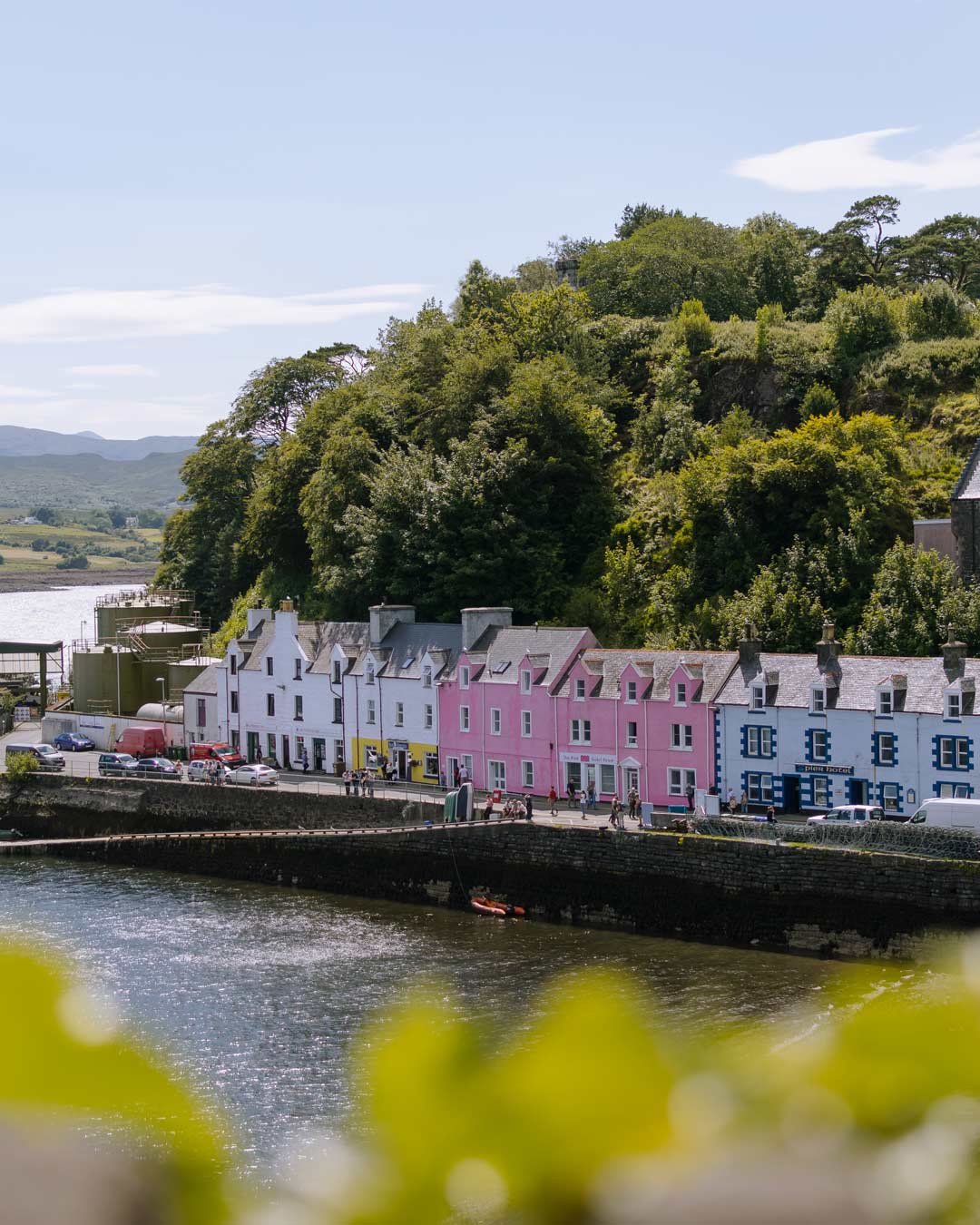

Photo by @silviaillescasphotography
On the dramatic shores of Loch Scavaig, the tiny hamlet of Elgol is reached via a sensational journey along a road through the Red Cuillins, past the lonely ruins of Cill Chriosd Church and its atmospheric graveyard. Elgol is a fantastic starting point for many hikes into the Cuillins or along the coastline, while you can also enjoy a boat ride across Loch Scavaig to the entrance of Loch Coruisk, known also as the cauldron of water.

Photo by Andrew Alexander

Photo by @hamishhepburn
Tarskavaig – in Gaelic, the bay of cod fish – is the largest of a collection of crofting settlements along the Sleat Peninsula, the views from where are among the most impressive in Scotland. The village is, like other settlements of its kind, dispersed across a valley that extends to Tarskavaig Bay, and the welcome to visitors, especially in the community run café, is guaranteed to be warm. At sunset, the sun disappears behind the Cuillins, silhouetting the jagged peaks against the amber sky, creating an ethereal atmosphere that is hard to rival.


On the north shore of Loch Eishort, accessible only on foot or by boat, the village of Boreraig is one of the finest examples of a cleared village on the island. Strolling around Boreraig is a necessarily haunting experience, as the forced removal of residents in the mid-1850s led to their expulsion to Australia or New Zealand, ruining many lives. Today, many of the houses and farm buildings are in remarkable condition despite the passage of time.

Photo by Russell Davies
Whisky distilling is a centuries-old industry on Skye and, as distilleries go, you don’t get any older than Talisker. The oldest working distillery on the island, with stunning views of the Cuillins from the shore of Loch Harport, Talisker Distillery offers educational tours of the site with tutored tasting, or a chance to savour the flavours of the rarest malt whiskies drawn from casks in the warehouse.
Traditions die hard on Skye, not least at the single malt whisky distillery at Torabhaig, where the 19th century steading has been carefully restored to hold pristine copper stills and traditional wooden washbacks. A guided tour of the site offers a fascinating insight into whisky production, from grain to spirit, as well as presenting an educational insight into the working life of the distillery. Whisky tasting, of course, is unmissable.

One of the most famous lighthouses in the country, Neist Point is located close to Glendale on the most westerly headland on the island. Landscape photographers flock here at sunset to capture the striking views, although the towering cliffs, impressive lighthouse, and chance to witness minke whales in summer make Neist Point a worthy attraction, whatever the time of day.
The marine life in the waters surrounding Skye is amongst the most varied and interesting in the UK, with basking sharks, porpoises, dolphins, and whales amongst the residents you may be keen to catch a glimpse of. Various tour operators offer dolphin and whale watching expeditions from the island, so make sure you take a camera and binoculars with you for an unforgettable look at some of nature’s finest, but most elusive, creatures.
There’s something delightfully Disneyesque about the Fairy Glen, an unearthly and captivating landscape of grassy, cone-shaped hills that are dotted sporadically with lochans – ponds – and a basalt structure that has erroneously been named a castle. Situated in western Trottenish, close to Balnacnoc, Fairy Glen offers mostly easy walking on winding grass paths, although the kids will delight in running wild and exploring the hidden crevices at will.
If you fancy seeing Skye’s stunning landscapes without strenuously exerting yourself on lengthy hikes, Misty Isle boat trips operate from Elgol to Loch Coruisk, and from Elgol to the Inner Hebrides. As well as absorbing the views while relaxing on-board, there’s the chance of spotting the abundant sealife, from basking sharks and minke whales, to bottlenose dolphins and (if you’re fortunate) Orca.
Skye’s landscapes are legendary and instantly recognisable, so for professional and budding photographers alike, the circular walk known as The Quirang is unmissable, crossing some of the island’s most stunning countryside. On a clear day, traversing the Trotternish Ridge, which was formed by an immense landslip that created rock pinnacles, spiralling cliffs, and shallow, secretive plateaus, present unlimited photo opportunities, or just the chance to sit and be consumed by the beauty of your surroundings.

Photo by Connor Mollison

Photo by Connor Mollison
Who said that wild landscapes are only for looking at? For those seeking an adrenalin rush, Skye’s rivers, waterfalls, caves, gorges, and cliff-faces pose a series of energetic challenges, from kayaking and abseiling, to river tubing and canyoning. Experience the untamed nature of Skye’s outdoors, supervised by expert instructors, for a heart-thumping adventure the island was almost designed for.
Skye’s dramatic landscape is the perfect backdrop for eagles as they soar from their rocky habitats on the island. In sunny weather, you may spot golden eagles or white-tailed eagles, particularly if you join an organised sea excursion from Portree which operates under a strict code of practice to ensure these magnificent birds aren’t disturbed. Fish are scattered during the trip to encourage the birds to scavenge, offering an unforgettable viewing experience.
Only 1.5km from the road south of Staffin, the walk to Rubha nam Brathairean is of moderate difficulty, with plenty to explore as you go. Said to be a site where monks lived and worshipped over a millennium ago, Brothers’ Point is a dramatic headland with outstanding views. If you reach the tidal area at the right time, you may be lucky enough to discover 165 million-year-old dinosaur footprints.

Photo by Pete Elliott
Recognisably one of the most photographed landscapes on the island of Skye, Loch Fada’s tranquility contrasts sharply with the foreboding mass of rock above it, upon which sits the Old Man of Storr. Early morning sunrises make for a particularly impressive scene, with the sunlight infused waters of the loch perfectly reflecting the dramatic landscape above.

Photo by Asad Iqbal
At the heart of the Cuillin lies the most impressive of all the freshwater lochs in Scotland. At 38 metres deep, the loch has featured in folklore and legend for centuries and, with ink-blue water and surrounded by jagged mountains, it’s not difficult to understand why. Loch Coruisk can be reached on foot from Sligachan (11km) or Kilmarie (9km), which includes a tricky walk over the ‘Bad Step’, but a boat from Elgol offers a less demanding, yet thoroughly rewarding, alternative to see one of the most impressive natural locations on Skye.

Photo by Sam Rogers

Photo by Pete Elliott
Perched on a rocky promontory overlooking the sea at the north end of the Trotternish Peninsula, Duntulm Castle is reminiscent of Cornwall’s Tintagel, although rather less complete. In fact, that it lies in ruins adds to the atmosphere – it’s impossible not to appreciate the magnificent defensive position that the castle once occupied – and the views are truly stunning. As the sun sets and the castle fades into shadows, you’ll quickly appreciate why several ghosts are said to roam Duntulm.

Photo by Andrew Barlow

The seat of the MacLeod of MacLeod that has dominated northern Skye for 800 years, Dunvegan is an award-winning castle set amid an extensive estate that is teeming with history. As well as touring the public rooms, filled with oil paintings and family heirlooms, you can explore the formal gardens, witness the seal colony on Loch Dunvegan, or hire a traditional clinker for a spot of fishing.

The ruins of Dunscaith Castle, constructed by the MacLeod clan during their rule of Lewis, teeters on the tip of a large rock that overlooks Loch Eishort on the western edge of the Sleat peninsula. Much of the castle has disappeared into the sea, but the little that remains poses a fascinating insight into the violent and turbulent history of the island. With sheer drops on all sides, Dunscaith was strongly defended, so care should be exercised when exploring the site.

Photo by Joella Doobrow

A ruined country house, inhabited once by the MacDonalds, Armadale Castle was a showhome of the early 19th century, which fell into ruin only 100 years later. Surrounded by 40 acres of inspiring woodland gardens, and enjoying a view over the Sound of Sleat, the abandoned state of Armadale Castle only adds to its romantic atmosphere, making it a perfect place for a stress-free wander through carpets of wild flowers in spring, or the ancient woodland in autumn.

Perched on a rocky headland that spills into Knock Bay north-east of Armadale, Knock Castle is a prominent feature in a rugged landscape, with the Sound of Sleat as its backdrop. Occupying the site of an Iron Age fort, the ruins defy belief as to how they remain intact, with sheer drops on two sides. Time and decay has overtaken this remarkable fort, which is said to be occupied only by two spirits: a Green Lady and a cowman.


The famous sea cliff in north-east Trotternish gained its name from its resemblance to a kilt, formed by vertical basalt columns that mirror pleats in the garment. The cliffs are best viewed from further along the coast – a stopping point between Staffin and Portree offers a fabulous view – while the Mealt Waterfall, which plunges from the top of the cliff, sends a 60 metre deluge into the Sound of Raasay.

Photo by Hamish Morrison

Photo by Connor Mollison
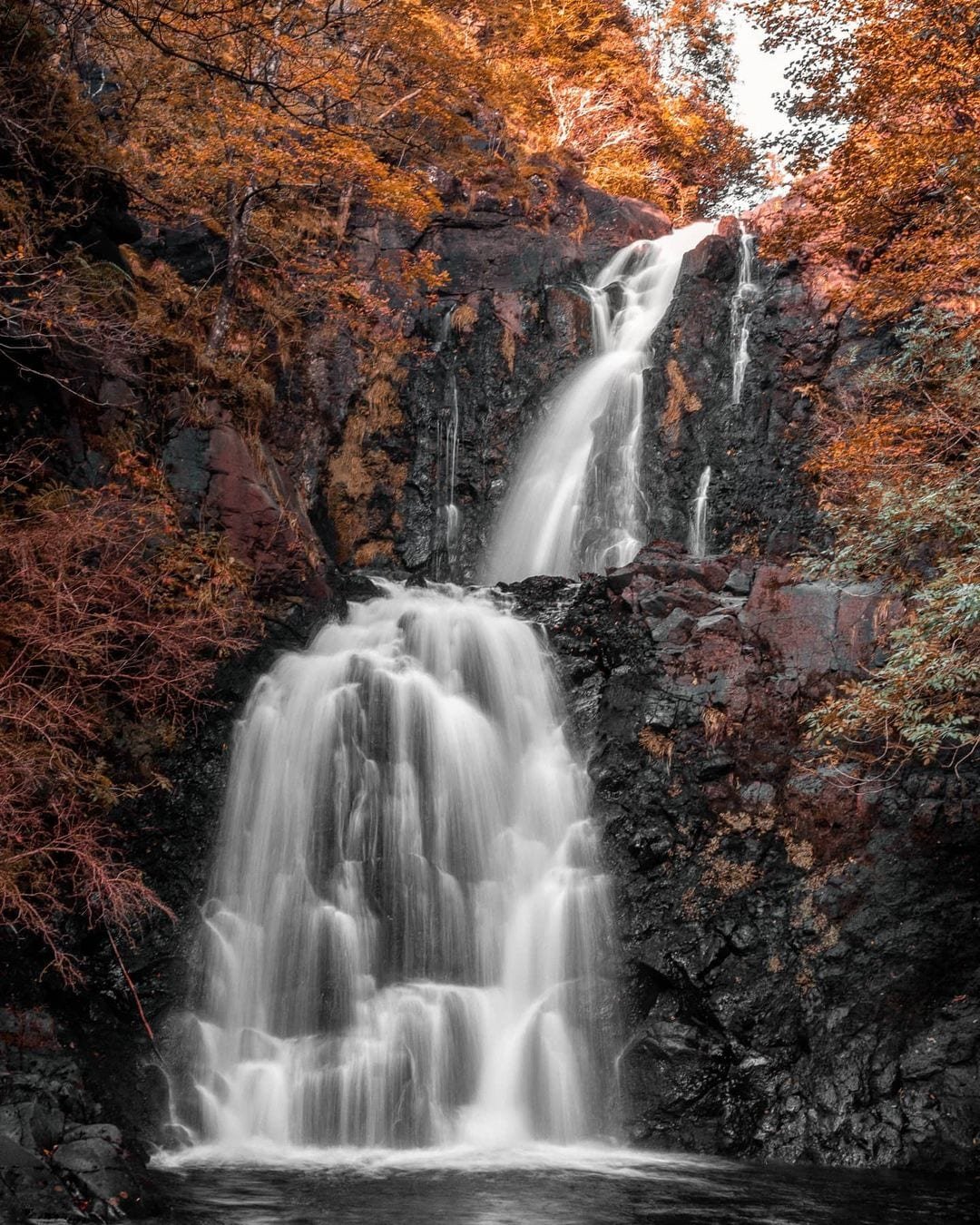
Photo by @davidbreaker

Photo by @lala_rts
A broch – an Iron Age circular stone tower found only in Scotland – is an important relic to the country’s primitive settlers, and Dun Beag Broch is one of the most complete examples remaining. Perched on the summit of a rocky knoll, it enjoys superb panoramic views and offers a fascinating window into the distant past; the larger, but ruined, Dun Mor is only half a kilometre away, and easily accessible on foot.
A stone enclosure that boasts a superb defensive position, Dun Skudiburgh teeters on a steep hill 60 feet above Loch Snizort. Being exposed to the wind and rain, Dun Skudiburgh is best visited in calm weather, when you can make the steep ascent to the summit where superb views await. Particularly impressive is the towering 17-metre-tall sea stack, as well as views over Waternish, the Ascrib Islands, and the Outer Hebrides.
Located only 10 minutes from Dunvegan Castle, Coral Beach is a magical place that is ideal for a leisurely day out, refreshing coastal walk, or spot of family time. Formed from crushed white fossilised and sun-bleached algae, the beach fringes tropical blue waters, conveying a strong sense of timelessness and purity. When the tide is low, it’s also possible to explore the tidal island of Lampay, which is only a gentle stroll across the bay.

Photo by Mikey P Photography

Photo by @jane_anna

Photo by @iain_cumming

Photo by @lesley.swann

Photo by @lesley.swann

Photo by @tylerlottuk

Photo by @nikkistewart91

Photo by @john.sloan.3517
Roads don’t normally feature in travel guides, especially when they’re less than two miles of single-track highway, but Calum’s Road is a lasting fixture of local folklore. Fittingly named after the man who single-handedly built it, Calum’s Road was the work of a 56-year-old postman who wanted to reverse the decline of Raasay, as well as providing a way for his daughter to visit at weekends. Today, a memorial stands close to the road in memory of the intrepid engineer.

Photo by Caroline McQuistin

Photo by @welshach

Your journey awaits
Join our mailing list to receive our weekly journal, where a journey of discovery awaits.
WIN
A 2 NIGHT STAY
AT THE GART MANSION

This prize includes a champagne reception, three course meal and a breakfast hamper on both mornings. And is worth over £10,000.
Already have an account? log in here
You are now signed up for the Hidden Scotland Journal, a free weekly email. Would you also like to gain free access to the full features of Hidden Scotland? To find out more sign up below.
Already have an account ? Log in here
By entering your email, you agreee to recieve marketing emails from Hidden Scotland